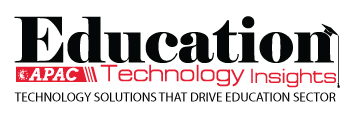THANK YOU FOR SUBSCRIBING
Be first to read the latest tech news, Industry Leader's Insights, and CIO interviews of medium and large enterprises exclusively from Education Technology Insights
Knowing the Unknown: How to Better Understand Behaviors of a Wide-Ranging Digital Audience
Dan Bocchino, Director, Web Services, Saint Peter’s University, Jersey City, NJ
 Dan Bocchino, Director, Web Services, Saint Peter’s University, Jersey City, NJ
Dan Bocchino, Director, Web Services, Saint Peter’s University, Jersey City, NJDan Bocchino is the Director of Web Services at Saint Peter’s University (Jersey City, NJ). He has overseen a web presence in various industries, including not-for-profit, e-commerce, and higher education. With over 20 years of experience in editorial, content management, and UI/UX, Dan focuses on user experience, UX best practices, and back-end content management and governance.
A university’s website serves many purposes—or at least it should. Whether launching a campaign, marketing the latest campus-wide event, or driving interested students to an enrollment page, a school’s site must excel in various roles. Perhaps more than in any other industry, a higher education web experience should be a versatile player in the digital ecosystem—a site that adapts to any position with skill while instilling confidence in its users.
This, of course, presents challenges, with the primary one being understanding who is visiting your site and what they aim to accomplish. While the saying “content is king” may still ring true in some contexts, for website management and UX strategy, the user is royalty.
With a diverse audience visiting a university site, how does a web professional better understand their users? While it’s easy to identify core groups like prospective students, families, and current students, what about the less obvious users? For example, a public-facing site might need to include content relevant to employees, even if a dedicated intranet exists. Though the strategy may focus on prospective students, guidance counselors, teachers, coaches, and other support staff also need consideration. We can use common sense and existing knowledge to get a basic understanding of our user base, but content for a higher ed site will rarely serve only one group. So, how do we better understand the unknown users that make up our varied audiences?
“While the saying “content is king” may still ring true in some contexts, for website management and UX strategy, the user is royalty”
1. User Testing - Remote testing platforms are widely available but may be cost-prohibitive for many universities. Such tests could be simulated through targeted questions, but gathering, reviewing, and disseminating feedback is still necessary. Why not utilize the existing community of faculty, staff, and current students? Conducting small focus groups (and yes, providing coffee and snacks is recommended!) allows you to delve into the specifics of your site’s UX. Internal user testing enables web or marketing teams to get granular with content testing and makes institution members feel involved in digital improvements.
2. A/B Testing - Most content management systems (CMSs) support easy setup for A/B tests. Even if your site’s CMS does not, you don’t need a major financial investment to start testing. Collaborate with your marketing team to create varied landing pages for targeted campaigns and direct them to users via email, ads, QR codes, etc. A simple A/B test involves minimal maintenance once the source page content is created; duplicating an existing page with slight tweaks to language or CTAs can yield valuable insights into what content works best for different user types.
3. Meet and Listen - While this may seem simple, it is often overlooked. At any institution or organization, you’ll likely encounter people with opinions about the website. Although feedback may sometimes be impractical or contrary to best practices, it can still offer valuable insights. Even if a suggestion like using flashing red text to alert students to deadlines isn’t feasible, it reveals what colleagues consider important. This information can help you adjust the site to better meet their needs.
While some of these concepts may already be in place at many institutions, they might not be used effectively. Create, listen, test, fix, iterate—and repeat. Understanding your site’s audience may seem daunting, but it can be more manageable than expected. Regardless of the school's size, site complexity, or budget, any web professional can leverage real-world testing and research to enhance the site’s experience for all members of “royalty.”
Read Also
Empowering Educators through Purposeful, Connected and Transformative Learning
Empowering Students to Lead: A New Vision for Civic Learning
The Director's Playbook: Strategic Digital Transformation in Rual Hyper-Growth Districts
The Art and Architecture of Student Support
From At-Risk to At-Promise: The Language Revolution Higher Education Needs
Teaching Tomorrow: How Western Governors University Is Redefining Teacher Preparation

I agree We use cookies on this website to enhance your user experience. By clicking any link on this page you are giving your consent for us to set cookies. More info






















